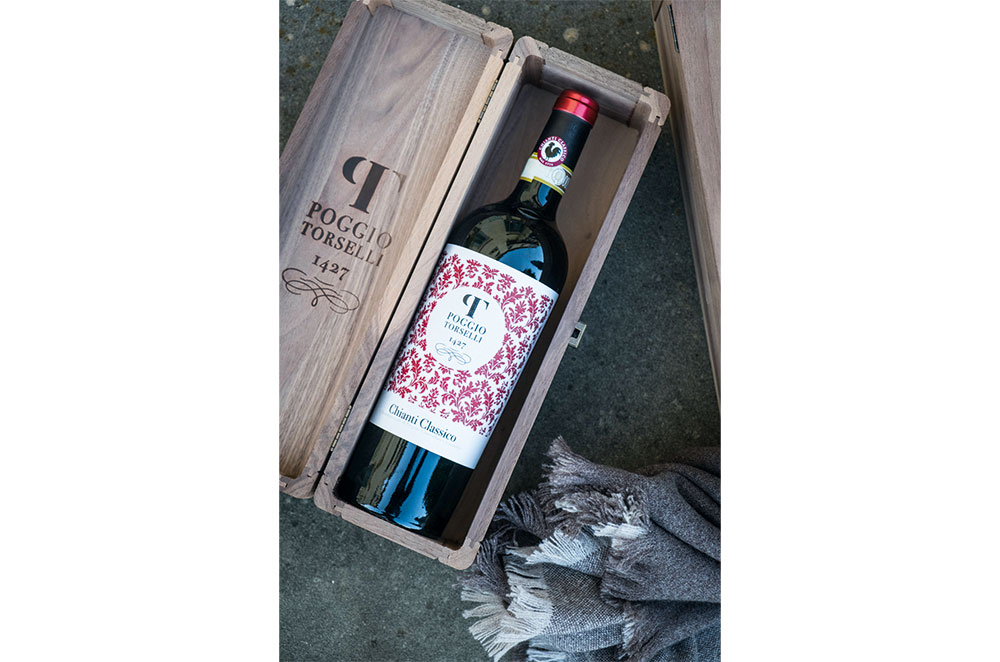The villa predates the dome by two or three years, but they can see each other, and the “Queen of Tuscan Villas”, Villa Poggio Torselli, looks north a few miles to Brunelleschi’s famous dome on the Duomo of Florence from the district of San Casciano Val di Pesa. Which is Chianti Classico land now, and the source of the vinous importance of the area.
Don’t miss the villa if you go to the countryside near Florence. Built in 1427, it has a beautiful Italian garden and evokes memories of famous owners and visitors, including a pope and a czar of Russia, no less. Its modern architectural history began with refurbishment between 1999 and 2003 with the aim of preserving the original grey pietra serena structure as much as possible, but its modern viticultural history is just as interesting.
A terroir-driven approach and low-intervention techniques are the leitmotivs of Poggio Torselli’s wine production, handled by owner Laura Giordani and winemaker Eduardo Colapinto.

Owner Laura Giordani (right) and winemaker Eduardo Colapinto
The start of the rebirth of serious wine production on the 24ha estate came with a project to document the soil differences of each vineyard area over 15 years ago. This is now used to enhance the peculiarities of each vineyard parcel. The aim is to give support to the natural balance of nature and to treat vines in a holistic way as an integral part of the environment. This means using herbal infusions, for example, and grazing animals, geese and sheep, to benefit the soil.
Manual harvests and low yields mean grapes can be selected in optimum condition. The same methods seen in viticulture on the estate are also applied at the winemaking stage in the cellars: the object is to make high-quality wine by using minimum intervention. Fermentation is carried out with ambient yeasts and the length of time spent on the lees increases the complexity and smoothness of the wines while avoiding the need for high quantities of sulphites. Only a limited amount of oak is used, with a preference for large barrels or used barriques, thus allowing the identity of the grapes to fully emerge.

Production is limited. 50,000 bottles were produced in the 2019 vintage, including a charming and traditional Chianti Classico, an elegant Chianti Classico Riserva, and three IGTs including the juicy Bizzarria Rosso from 100% Sangiovese, the statuesque Bizzarria Bianco white blend made from Chardonnay, Sauvignon and Gewürztraminer grapes, and the luscious Bizzarria rosé from the rare, native Pugnitello grape.
Poggio Torselli offers:
- Free shipping all around the world for premium members of its wine club.
- Exclusive tours of the villa – which is a private house – and the famous Italian garden.
- Special wine and olive oil tastings.
- A private concierge available for advising on serving suggestions. recipes, wine and history details.





